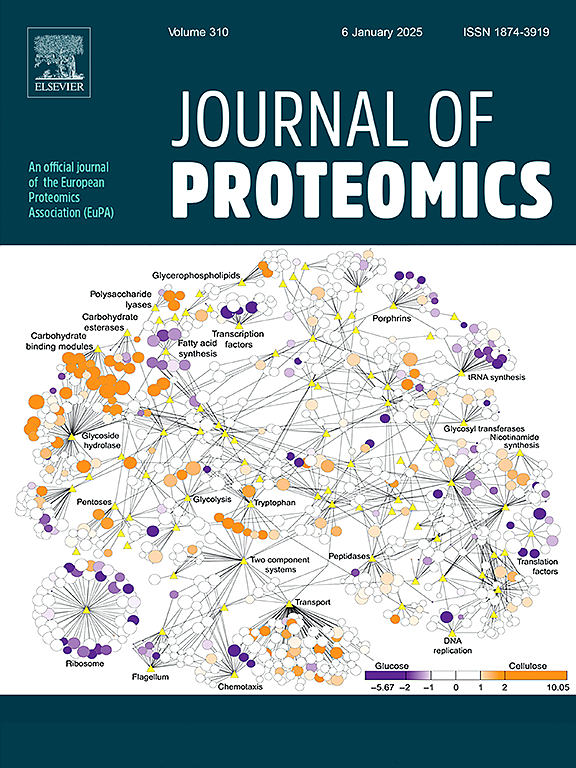新的模式生物和蛋白质组学为更好的生物学理解
IF 2.8
2区 生物学
Q2 BIOCHEMICAL RESEARCH METHODS
引用次数: 0
摘要
随着多组学技术的最新进展,“模式生物”的概念正在被重新审视,这些技术现在可以捕捉随着时间的推移而发生的全部分子事件,而不管所研究的是什么生物。经典的、经过充分研究的模型,如大肠杆菌、酿酒酵母等,长期以来在假设检验、可重复性和研究人员之间共享公共平台方面都很有价值。然而,它们并不适用于所有类型的研究。生物学中未解问题的复杂性需要更复杂的系统,特别是研究植物和动物的生物多样性,微生物生态系统及其与宿主的相互作用(如果有的话)。被称为“全息生物”的更综合的系统正在出现,用于描述和统一宿主生物和相关微生物,提供所有可能的相互作用和轨迹的概述。比较进化蛋白质组学为从少数模式生物到其他模式生物的知识外推提供了有趣的前景。这种方法能够更深入地表征生命之树的三个分支,即细菌、古生菌和真核生物的蛋白质和变形形式的多样性。它还为解决遗留的生物学问题提供了强有力的手段,例如,当生物体面临人为毒物、病原体、饮食变化或气候压力等环境挑战时,确定生物体中的关键分子角色,并提出长期可持续的解决方案。在这篇评论中,我们根据多组学技术的进展重新评估了“模式生物”的概念。传统模型在假设检验、再现性和促进共享研究框架方面已被证明是无价的。然而,我们讨论了它们不是普遍适用的。为了解决生物多样性等复杂问题,了解微生物生态系统及其与宿主的相互作用,像“全息生物”这样的综合系统,包括宿主生物及其相关微生物,正日益突出。比较进化蛋白质组学通过对生物体中蛋白质多样性的详细探索,进一步增强了我们的理解。这种方法还有助于识别面临环境挑战(如污染物、病原体、饮食变化或气候压力)的生物体中的关键分子,并有助于制定可持续的长期解决方案。本文章由计算机程序翻译,如有差异,请以英文原文为准。

Novel model organisms and proteomics for a better biological understanding
The concept of « model organisms » is being revisited in the light of the latest advances in multi-omics technologies that can now capture the full range of molecular events that occur over time, regardless of the organism studied. Classic, well-studied models, such as Escherichia coli, Saccharomyces cerevisiae, to name a few, have long been valuable for hypothesis testing, reproducibility, and sharing common platforms among researchers. However, they are not suitable for all types of research. The complexity of unanswered questions in biology demands more elaborated systems, particularly to study plant and animal biodiversity, microbial ecosystems and their interactions with their hosts if any. More integrated systems, known as « holobionts », are emerging to describe and unify host organisms and associated microorganisms, providing an overview of all their possible interactions and trajectories. Comparative evolutionary proteomics offers interesting prospects for extrapolating knowledge from a few selected model organisms to others. This approach enables a deeper characterization of the diversity of proteins and proteoforms across the three branches of the tree of life, i.e. Bacteria, Archaea, and Eukarya. It also provides a powerful means to address remaining biological questions, such as identifying the key molecular players in organisms when they are confronted to environmental challenges, like anthropogenic toxicants, pathogens, dietary shifts or climate stressors, and proposing long-term sustainable solutions.
Significance
In this commentary, we reevaluated the concept of “model organisms” in light of advancements in multi-omics technologies. Traditional models have proven invaluable for hypothesis testing, reproducibility, and fostering shared research frameworks. However, we discussed that they are not universally applicable. To address complexities such as biodiversity and understand microbial ecosystems and their host interactions, integrated systems like “holobionts,” which encompass host organisms and their associated microbes, are gaining prominence. Comparative evolutionary proteomics further enhances our understanding by enabling detailed exploration of protein diversity across organisms. This approach also facilitates the identification of critical molecular players in organisms facing environmental challenges, such as pollutants, pathogens, dietary changes, or climate stress, and contributes to developing sustainable long-term solutions.
求助全文
通过发布文献求助,成功后即可免费获取论文全文。
去求助
来源期刊

Journal of proteomics
生物-生化研究方法
CiteScore
7.10
自引率
3.00%
发文量
227
审稿时长
73 days
期刊介绍:
Journal of Proteomics is aimed at protein scientists and analytical chemists in the field of proteomics, biomarker discovery, protein analytics, plant proteomics, microbial and animal proteomics, human studies, tissue imaging by mass spectrometry, non-conventional and non-model organism proteomics, and protein bioinformatics. The journal welcomes papers in new and upcoming areas such as metabolomics, genomics, systems biology, toxicogenomics, pharmacoproteomics.
Journal of Proteomics unifies both fundamental scientists and clinicians, and includes translational research. Suggestions for reviews, webinars and thematic issues are welcome.
 求助内容:
求助内容: 应助结果提醒方式:
应助结果提醒方式:


